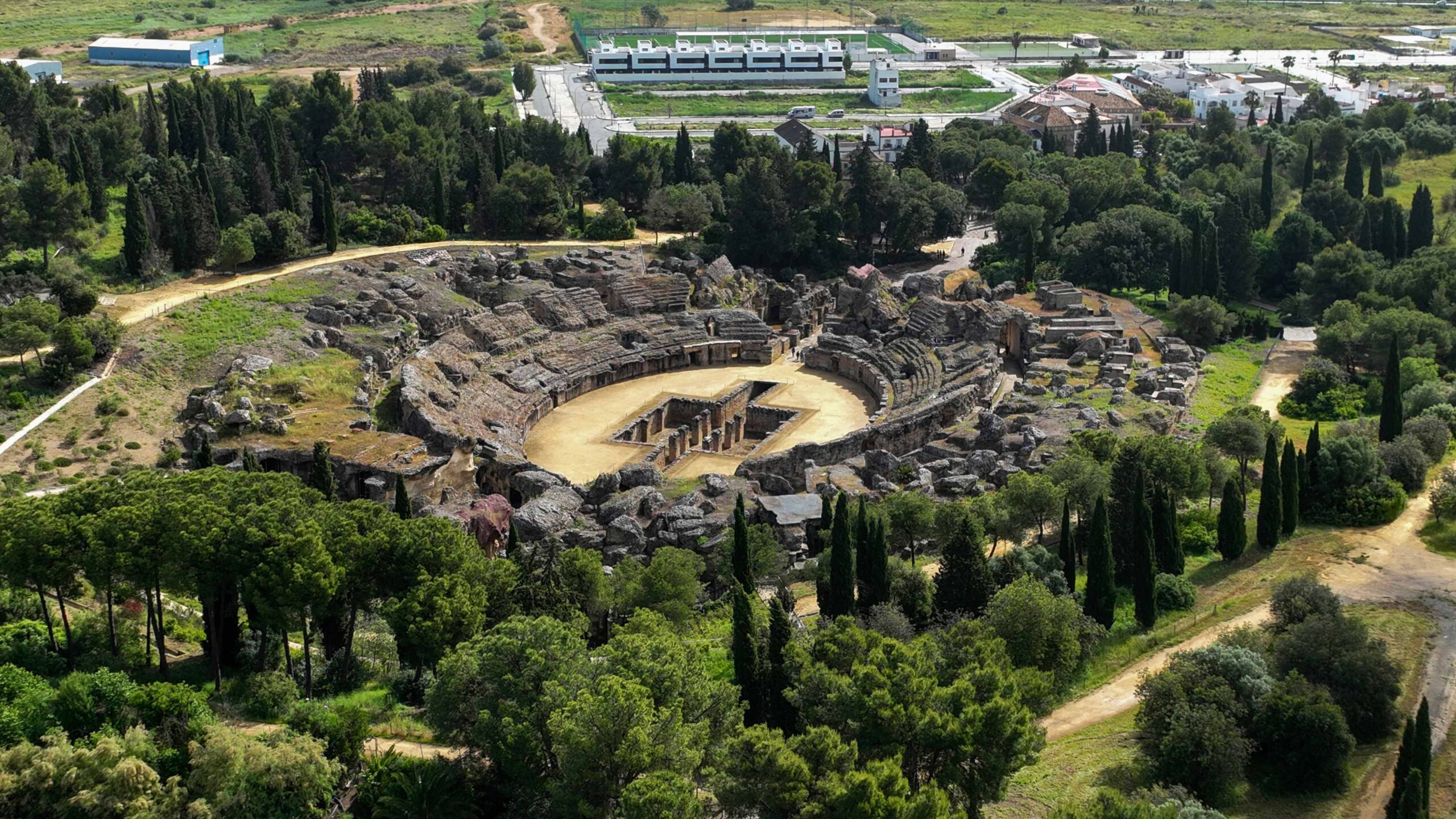Itálica, the Roman Jewel on the Doorstep of Seville
Just 7 kilometers from the center of Seville, in the town of Santiponce, lies one of the most impressive archaeological sites in the Iberian Peninsula: Itálica, the first Roman city founded outside of Italy. Its history, its monuments, and the remarkable state of preservation of its remains make this site a must-visit for history, culture, and archaeology enthusiasts.

The origins of Italica
Itálica was founded in 206 BC by General Publius Cornelius Scipio, known as “Scipio Africanus,” after the Battle of Ilipa, where he defeated the Carthaginians during the Second Punic War. The settlement was created with a clear purpose: to serve as a colony for Rome’s veteran soldiers. From that moment on, the city became a strategic and economic hub of great importance in Roman Hispania.
Itálica was not only a key site politically and militarily, but it was also the birthplace of great emperors such as Trajan and Hadrian, two central figures in Roman history who led the Empire to its greatest period of expansion and splendor.
The splendour of the Roman city
Walking through the streets of Itálica is like traveling back in time. Its urban layout allows visitors to imagine daily life: from the noble patricians who lived in lavish villas to the crowds who filled the amphitheater to enjoy spectacles and games.
Among the most striking monuments are the following:
- The Amphitheatre of Italica
Built in the time of the emperor Hadrian, the amphitheatre was one of the largest in the Roman Empire, with a capacity for some 25,000 people. It was the site of gladiatorial combats, hunts and public spectacles that reflected the power and wealth of the city. Its size and preservation make it the undisputed star of the archaeological site.
- The Roman Theatre
Located in the centre of the town of Santiponce, the roman theatre is another of the jewels of Italica. It dates back to the end of the 1st century BC and, after a long excavation process, it has recovered its prominence thanks to the holding of cultural events such as the Itálica International Dance Festival or classical theatre performances, which bring this stage back to life two thousand years later.
- The Baths
Itálica featured two bath complexes: the smaller Minor Baths and the grand Major Baths, covering more than 30,000 square meters. These facilities included hot, warm, and cold pools, as well as saunas, gyms, and massage rooms. Far more than spaces for hygiene, they served as true centers of social life.
- Private houses
The luxurious villas of Itálica are another major attraction. Residences such as the House of Neptune , the House of the Exedra , and the House of the Birds still preserve original floors and intricate mosaics depicting mythological scenes, geometric patterns, and animals. These remains offer a glimpse into the sophistication and wealth of the Roman elite.
- The mosaics
The mosaics of Itálica deserve a special mention. Among the most famous are the Planetarium Mosaic, which represents the deities associated with the planets; the Labyrinth Mosaic, showing Theseus and the Minotaur; and the Birds Mosaic, where more than thirty different species can be identified.
How to visit Italica
The importance of Itálica extends far beyond its Roman past. In recent years, the site has gained international recognition after its amphitheater was chosen by HBO as a filming location for Game of Thrones, where it served as the Dragonpit in King’s Landing. This boosted the site’s popularity, attracting both history enthusiasts and fans of the series.
It’s recommended to dedicate at least half a day to exploring the site, discovering its monuments, and enjoying the peaceful atmosphere of this place brimming with history.
Visit and practical tips
The square is open to the public and access is free. It can be visited at any time of day, although the best times to enjoy the Plaza de España are at dawn or dusk, when the sunlight brings out the warmth of the bricks and ceramics. It is also highly recommended to rent a small boat to sail along the canal or just sit and watch the life flowing between tourists, street musicians and passers-by.
Right next to it is the Parque de María Luisa, a real green lung in the city centre, ideal for continuing the walk and discovering other corners such as the Glorieta de Bécquer or the Archaeological Museum.
Where to stay near Italica
After a day exploring the Roman ruins, there’s nothing better than relaxing in a charming hotel. In this regard, Hidden Hotels offers very attractive options in the center of Seville.
Cavalta Boutique Hotel, located in the heart of the Triana district,l is ideal for those seeking to combine culture and relaxation. Its restaurant with a pool provides an exclusive space to savor local cuisine and unwind after a day of sightseeing. Its prime location also makes it easy to explore Triana’s streets and enjoy pleasant walks through its green areas.
Both hotels are only a short distance away from 15 minutes by car from ItalicaThis makes them an excellent base from which to organise a cultural getaway without sacrificing the comfort and elegance that characterise these accommodations.
